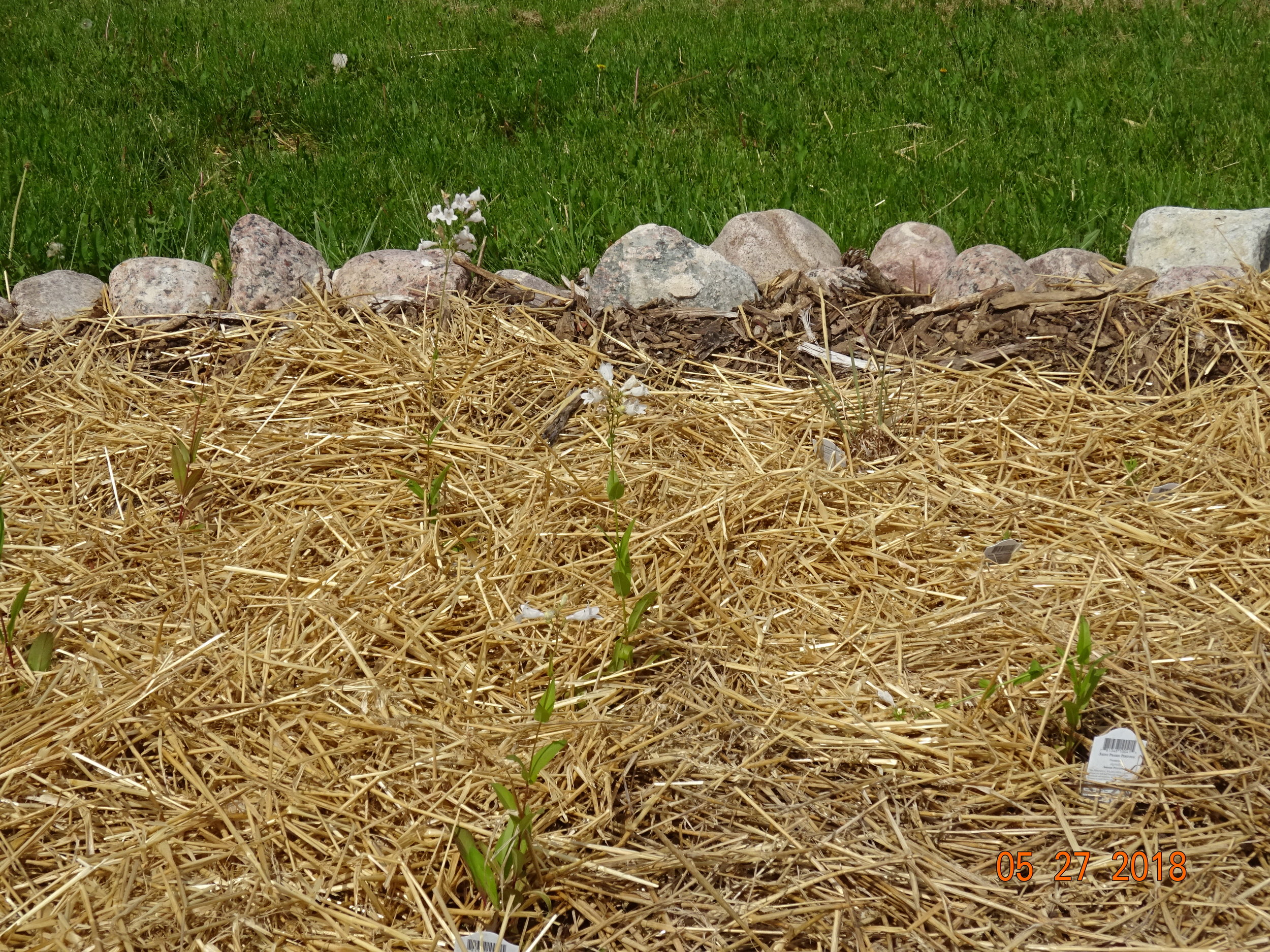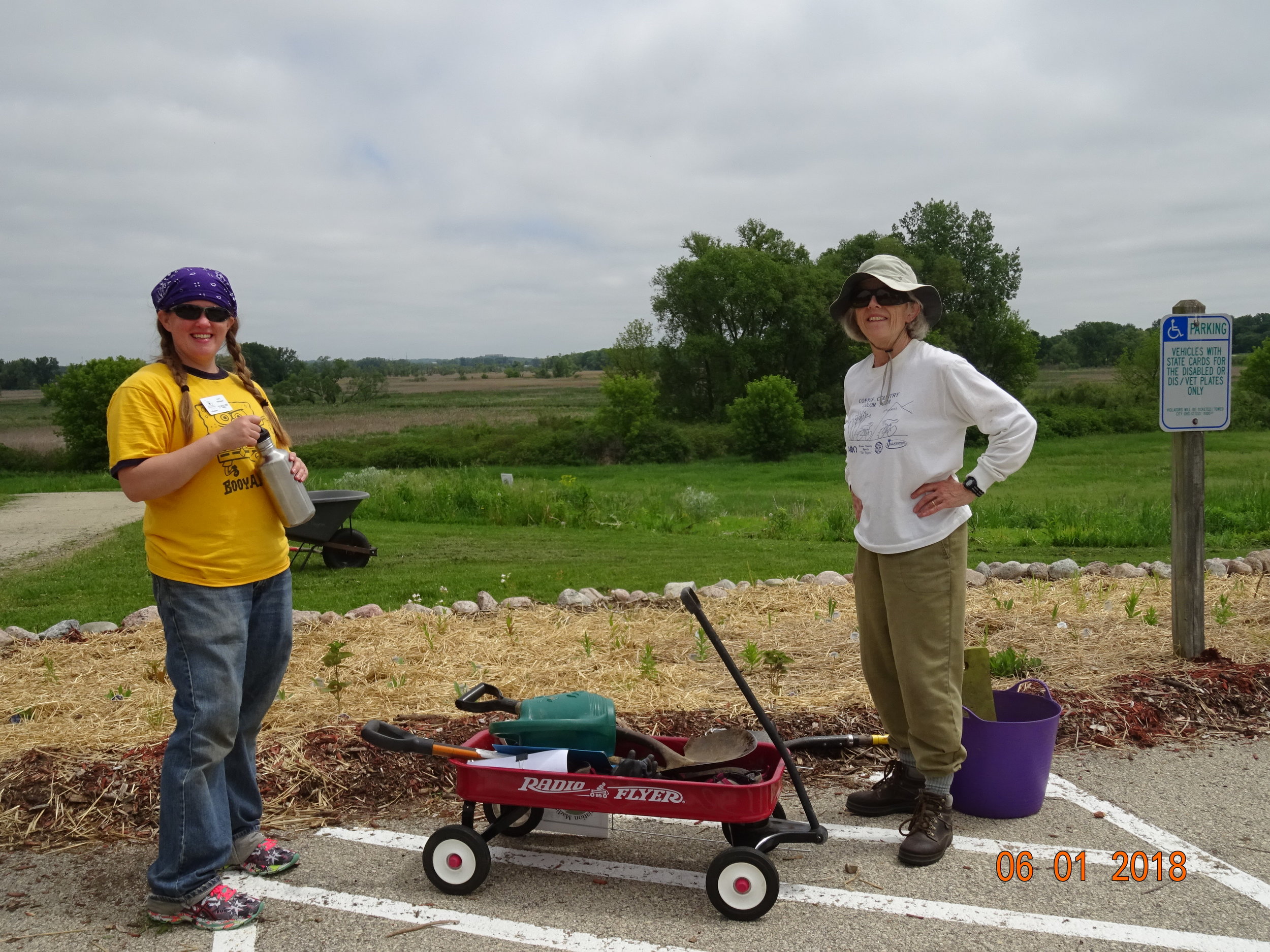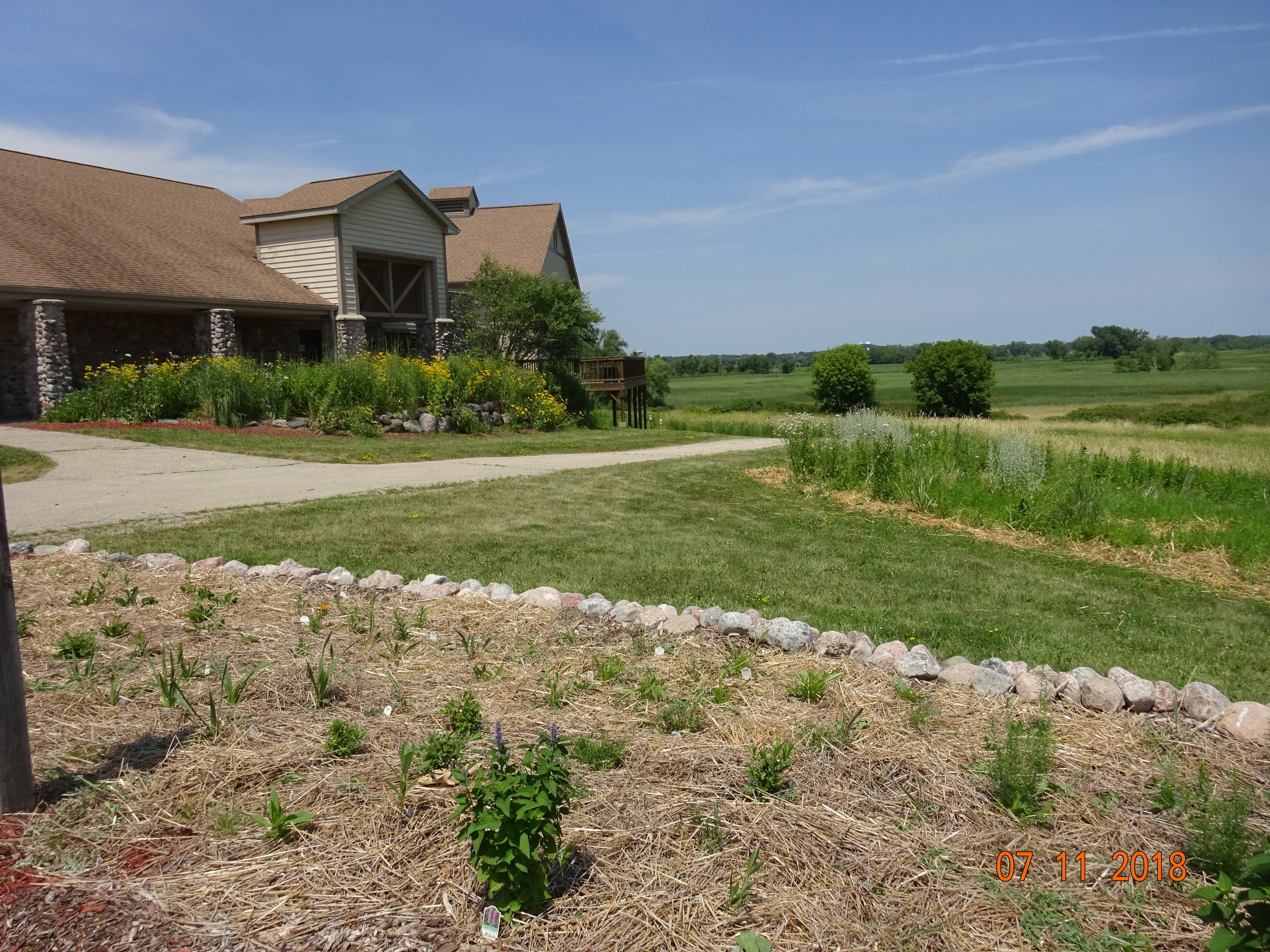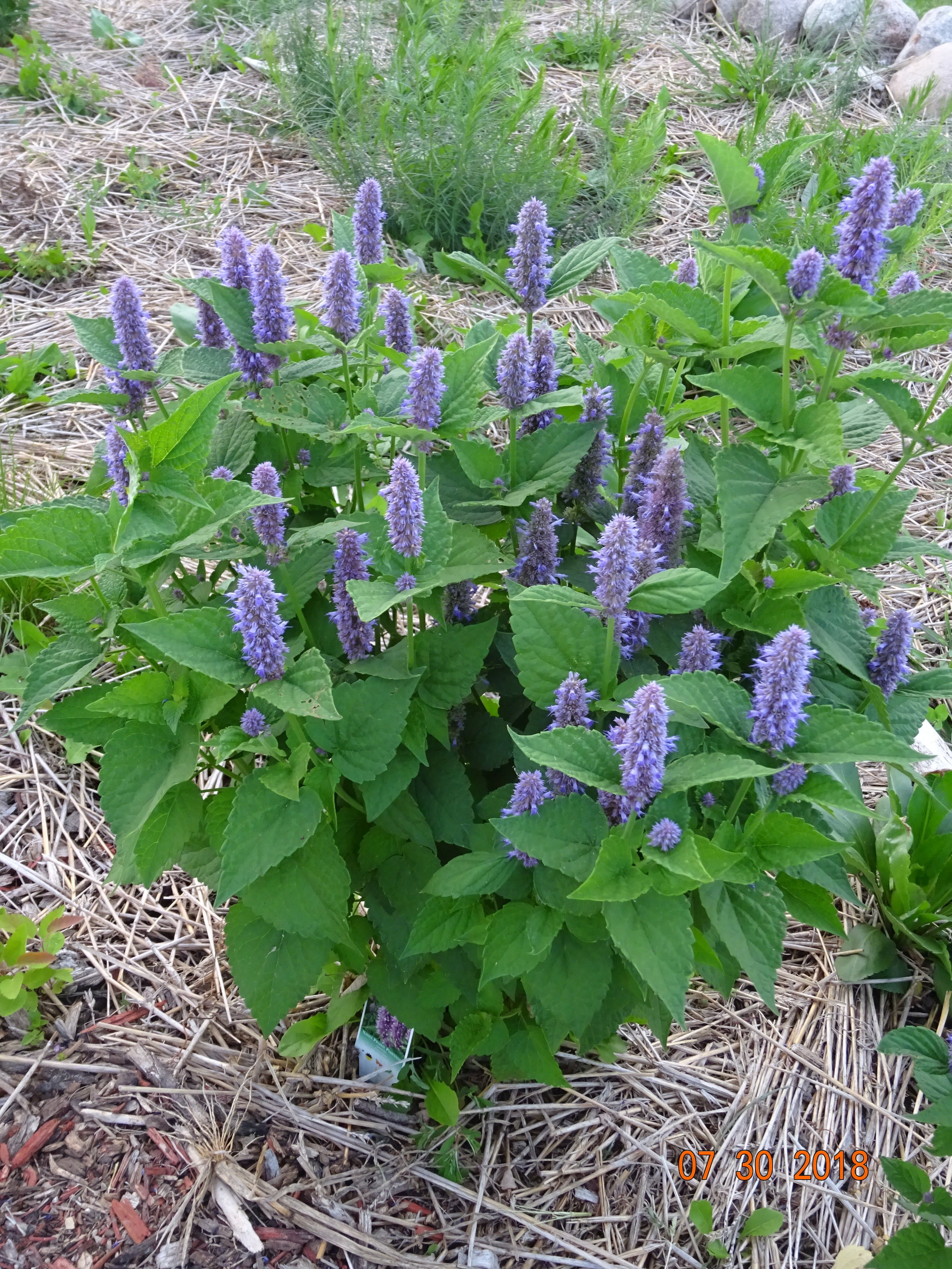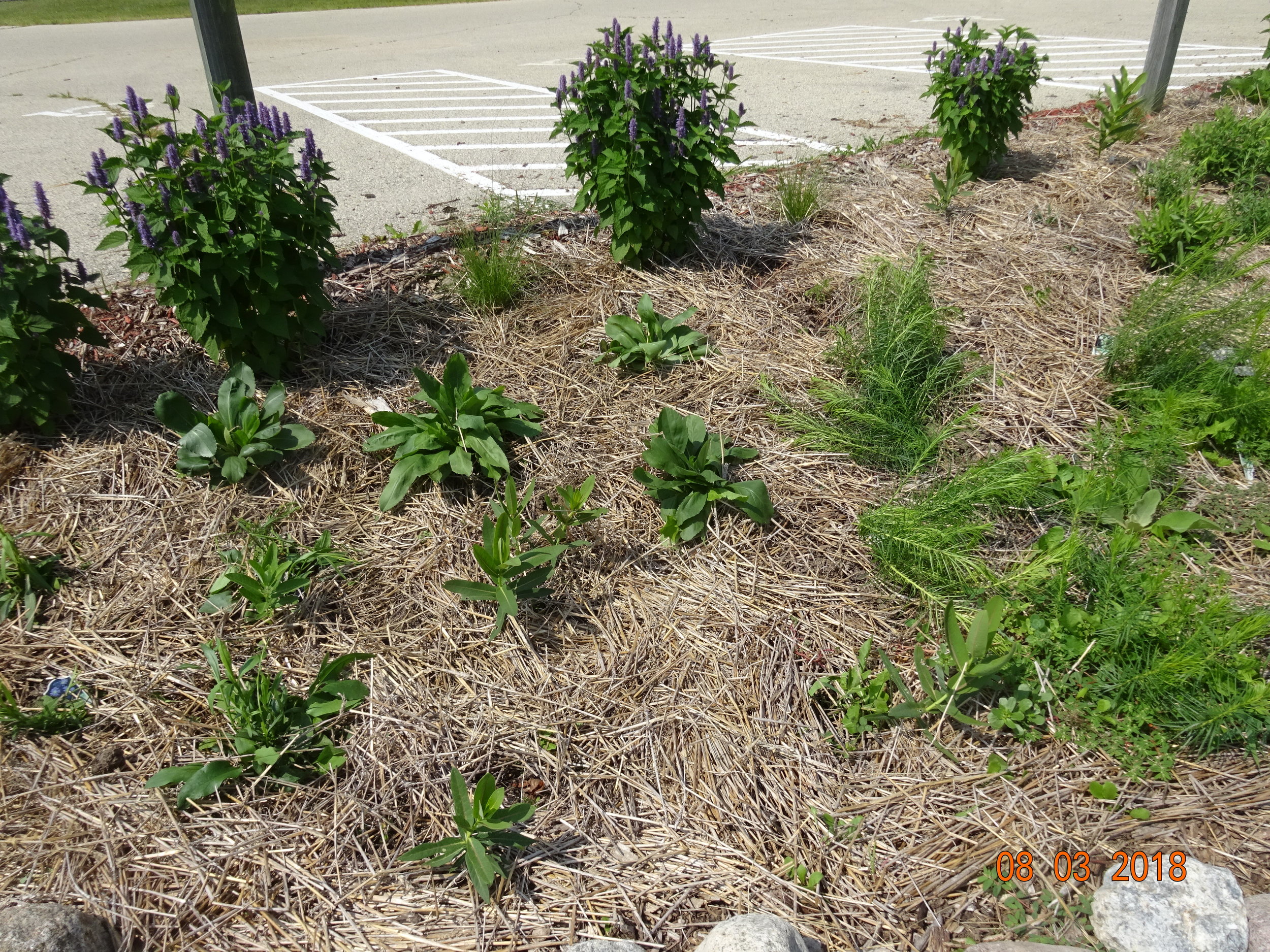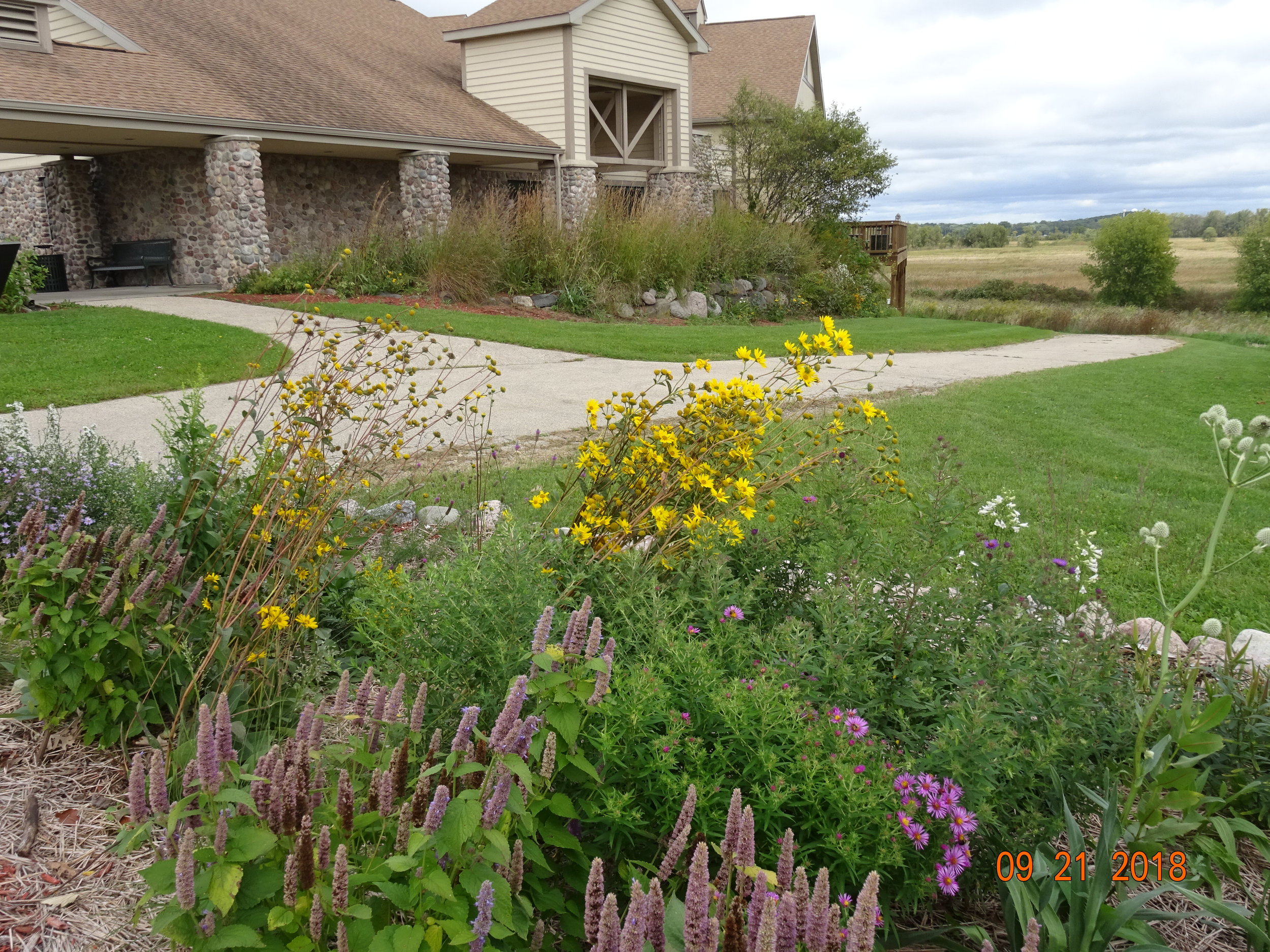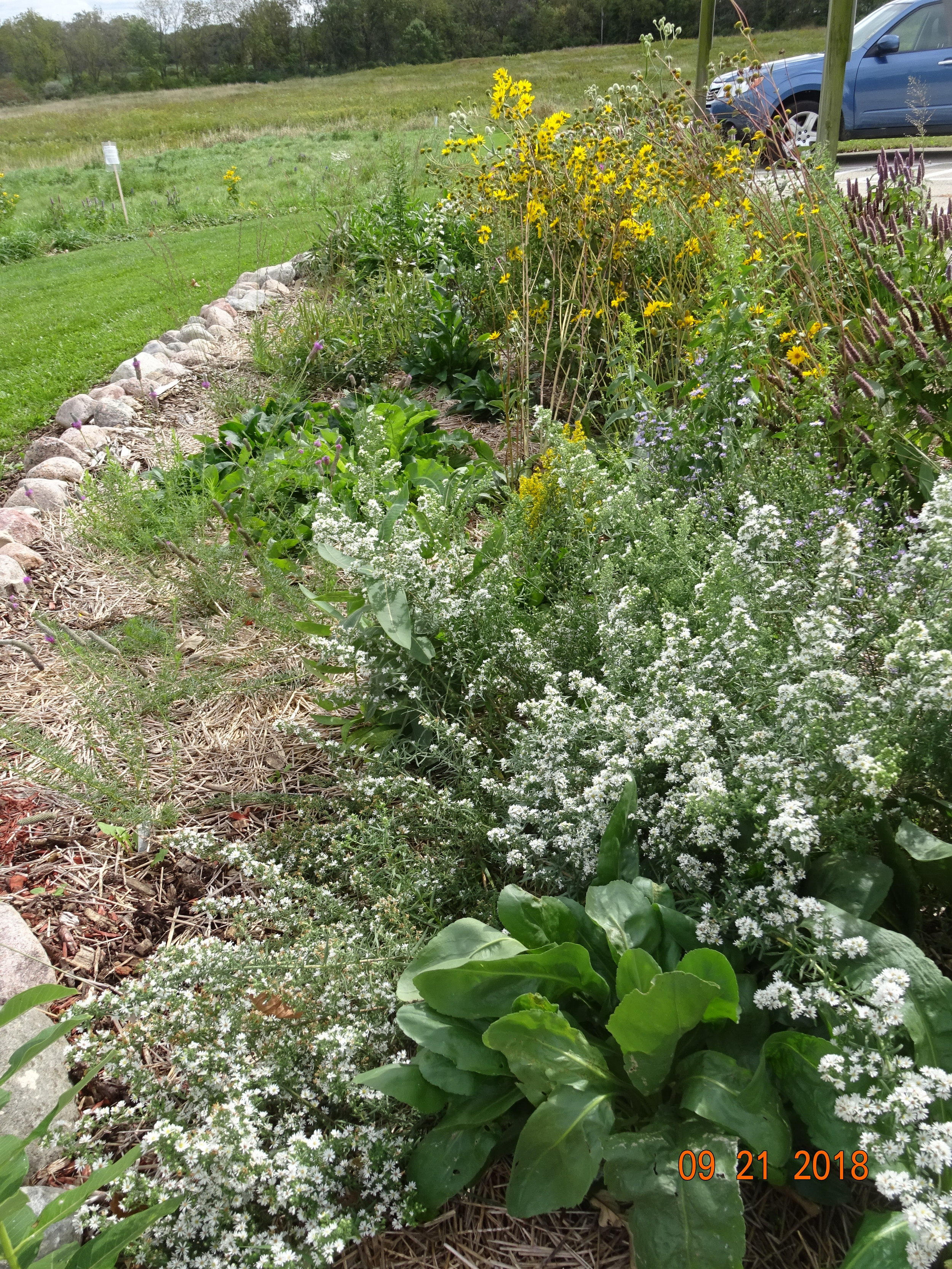City County Building Gardens
The Signature Project beds are at the top of the stairs behind the stunning annual gardens that Master Gardener Sally Averkamp manages.
2025 Signature Project
Thank you to everyone who joined us for our hands-on terrace garden beds planting event on Friday, May 9 at the City County Building!
Together, we brought a professionally designed landscape to life using the innovative matrix planting method—an approach inspired by natural plant communities where layers of compatible plants grow densely. This method not only creates a beautiful, resilient garden but also helps reduce the need for mulch and simplifies long-term maintenance.
To everyone who participated, your contributions made a lasting impact on our community. We appreciate your time, energy, and enthusiasm in making this project a success!
Now, we invite the entire community to come see the transformation for yourself!
Take a stroll around the newly planted terrace garden beds at the City County Building and experience how thoughtful design and community effort can come together to create something truly special.
Enjoy the beautifully planted spaces maintained by Sally Averkamp and her team of gardeners both at the City-County Building and at the Dane County Courthouse.
Stop by, take a look, and enjoy these beautiful spaces!
2018 - 2024 Signature Project
LUSSIER POLLINATOR GARDENS AND PRAIRIE RESTORATION
In 2017, the MAMGA Board decided to select a project that would be the focus of volunteer efforts in the community. The site that was selected is a prairie next to the Lussier Cultural Heritage Center that slopes to the east and the wetlands along the Yahara River. Our on-site partner is Clare Carlson, Dane County naturalist coordinator. We also worked with Lars Higdon, Dane County Botanist/Naturalist.
Much of the effort was to remove the wild parsnip, honeysuckle, thistle and reed canary grass. We also transplanted prairie plants from the existing prairie areas on the Lussier grounds in areas #1, 2 and 3.
In April 2018, we learned that a pollinator garden would be installed between the Lussier Center's parking lot and the western edge of the prairie, overlooking our larger project. The display of prairie flowers and smaller grasses will create an eye-catching entrance to the larger view. Here is the list of plants ordered to fill the 350 sq ft pollinator garden according to this plan.
During the winter, several MAMGA members worked together to apply for a grant from the Dane County Environmental Council for money that will be used to buy native prairie plants.
The Pollinator Garden was installed on May 18 at the site that had been well-mulched with wood chips and bordered with local stone. We removed several inches of the wood chips, planted the seedlings, and mulched the bed with straw. Several of the penstemon plants were blooming in no time. The weather turned hot so we watered the new seedlings twice when the soil seemed dry.
The larger and more ambitious Signature Project focused on the prairie next to the Lussier Center, just east of the Pollinator Garden. Our work crew (Lily, Lynn, Dennis, Clare, Lori, and Percy) installed more than 400 seedlings. A crew of four planted the remaining seedlings and continued attacking the brome grass with an herbicide application. Near-record rainfalls kept even the tiniest seedlings well-watered. Some of the plants doubled in height in less than ten days.
Views of the Lussier Pollinator Garden
The Pollinator Garden lies between the parking lot, the Lussier Center, and the prairie which is the MAMGA Signature Project. The space had been covered with wood chips in the fall of 2017 and edged with local stone. MAMGA volunteers removed the wood chips prior to planting on May 18, then mulched the plants with straw. The plants were watered using hoses extended from the building. Rainfall was generous during the summer and the pollinator plants thrived without the need for much water because of being planted in mid-May.




